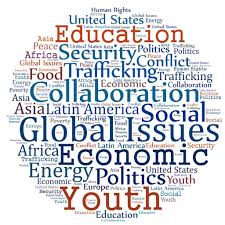Balancing Act: Global Strategies for Sustainable Resource Utilization and Environmental Conservation

Updated at: 2023-08-13 16:25:14 (2 years ago by Melkisedeck Leon Shine)
Balancing Act: Global Strategies for Sustainable Resource Utilization and Environmental Conservation
In today's world, the need for sustainable resource utilization and environmental conservation has never been more urgent. As our planet faces increasing challenges such as climate change, deforestation, and depletion of natural resources, it is crucial that we adopt global strategies to address these issues and ensure a sustainable future for generations to come.
-
Understand the interconnectedness: The first step towards sustainable resource utilization and environmental conservation is recognizing the interconnectedness of all ecosystems. What happens in one part of the world can have far-reaching consequences elsewhere. By understanding this, we can work together to find solutions that benefit not only our local communities but the entire planet.
-
Embrace renewable energy sources: Transitioning from fossil fuels to renewable energy sources is vital for reducing greenhouse gas emissions and mitigating climate change. Investing in solar, wind, and hydroelectric power can help us achieve a more sustainable and cleaner energy future.
-
Promote sustainable agriculture: As the global population continues to grow, it is essential to implement sustainable agricultural practices that minimize environmental impact. This includes reducing chemical pesticide use, promoting organic farming methods, and supporting local and regenerative agriculture.
-
Encourage responsible consumption: Consumer behavior plays a significant role in resource utilization and environmental conservation. By promoting responsible consumption habits such as recycling, reducing waste, and buying eco-friendly products, we can make a positive impact on the planet.
-
Preserve biodiversity: Protecting and preserving biodiversity is crucial for maintaining healthy ecosystems. This can be achieved through the establishment of protected areas, sustainable fishing practices, and efforts to combat illegal wildlife trade.
-
Foster international cooperation: Global challenges require global solutions. Through international cooperation and collaboration, we can share knowledge, resources, and best practices to address sustainability issues effectively.
-
Invest in green technologies: Supporting the development and adoption of green technologies is essential for sustainable resource utilization. From electric vehicles to energy-efficient buildings, these innovations can help reduce carbon emissions and promote a greener future.
-
Educate and raise awareness: Education is a powerful tool in promoting sustainable practices. By raising awareness about the importance of resource conservation and environmental protection, we can inspire individuals and communities to take action.
-
Empower local communities: Sustainable resource utilization and environmental conservation are best achieved when local communities are actively involved. Empowering communities through education, training, and access to resources enables them to become stewards of their natural environment.
-
Implement effective policies: Governments and policymakers play a crucial role in driving sustainable development. By implementing and enforcing effective policies, regulations, and incentives, they can create an enabling environment for sustainable resource utilization.
-
Foster sustainable business practices: Encouraging businesses to adopt sustainable practices not only benefits the environment but also supports economic growth. From reducing waste and energy consumption to promoting responsible supply chains, businesses can make a significant contribution to sustainability.
-
Support green finance initiatives: Investing in sustainable projects and businesses through green finance initiatives can accelerate the transition towards a more sustainable future. By redirecting financial resources towards environmentally friendly ventures, we can drive positive change.
-
Engage in research and innovation: Continued research and innovation are vital for finding new solutions to sustainability challenges. By supporting scientific advancements and technological innovations, we can unlock new possibilities for resource utilization and environmental conservation.
-
Promote environmental stewardship: Encouraging individuals to become environmental stewards in their daily lives is essential. This can involve simple actions such as conserving water, reducing plastic waste, and supporting local environmental initiatives.
-
Advocate for policy change: Finally, we must use our voices to advocate for policy change at local, national, and international levels. By engaging with policymakers, participating in public consultations, and supporting environmental organizations, we can drive the necessary changes for a sustainable future.
In conclusion, promoting global sustainable resource utilization and environmental conservation is a collective responsibility that requires action from individuals, communities, businesses, and governments. By adopting these strategies, we can create a more sustainable and thriving planet for ourselves and future generations. Will you join us in this important endeavor?




